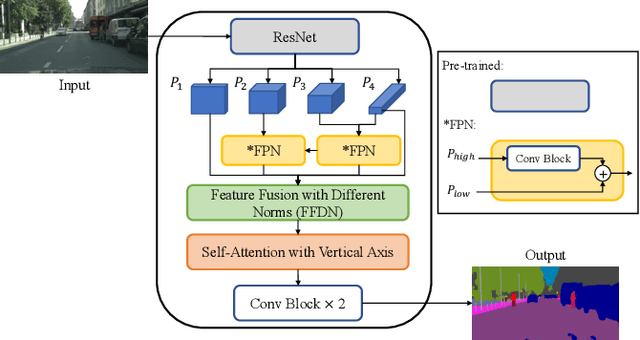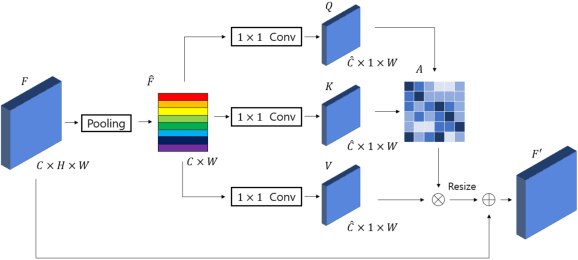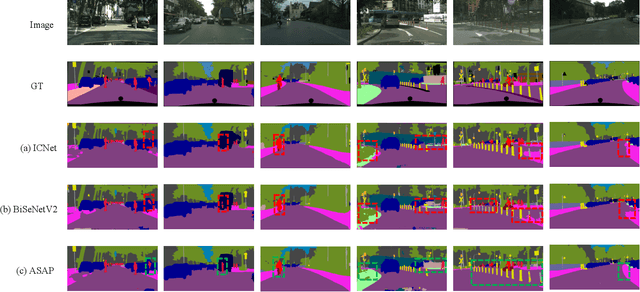Junghwan Kim
MAS-LitEval : Multi-Agent System for Literary Translation Quality Assessment
Jun 17, 2025Abstract:Literary translation requires preserving cultural nuances and stylistic elements, which traditional metrics like BLEU and METEOR fail to assess due to their focus on lexical overlap. This oversight neglects the narrative consistency and stylistic fidelity that are crucial for literary works. To address this, we propose MAS-LitEval, a multi-agent system using Large Language Models (LLMs) to evaluate translations based on terminology, narrative, and style. We tested MAS-LitEval on translations of The Little Prince and A Connecticut Yankee in King Arthur's Court, generated by various LLMs, and compared it to traditional metrics. \textbf{MAS-LitEval} outperformed these metrics, with top models scoring up to 0.890 in capturing literary nuances. This work introduces a scalable, nuanced framework for Translation Quality Assessment (TQA), offering a practical tool for translators and researchers.
Optimizing 4D Gaussians for Dynamic Scene Video from Single Landscape Images
Apr 04, 2025Abstract:To achieve realistic immersion in landscape images, fluids such as water and clouds need to move within the image while revealing new scenes from various camera perspectives. Recently, a field called dynamic scene video has emerged, which combines single image animation with 3D photography. These methods use pseudo 3D space, implicitly represented with Layered Depth Images (LDIs). LDIs separate a single image into depth-based layers, which enables elements like water and clouds to move within the image while revealing new scenes from different camera perspectives. However, as landscapes typically consist of continuous elements, including fluids, the representation of a 3D space separates a landscape image into discrete layers, and it can lead to diminished depth perception and potential distortions depending on camera movement. Furthermore, due to its implicit modeling of 3D space, the output may be limited to videos in the 2D domain, potentially reducing their versatility. In this paper, we propose representing a complete 3D space for dynamic scene video by modeling explicit representations, specifically 4D Gaussians, from a single image. The framework is focused on optimizing 3D Gaussians by generating multi-view images from a single image and creating 3D motion to optimize 4D Gaussians. The most important part of proposed framework is consistent 3D motion estimation, which estimates common motion among multi-view images to bring the motion in 3D space closer to actual motions. As far as we know, this is the first attempt that considers animation while representing a complete 3D space from a single landscape image. Our model demonstrates the ability to provide realistic immersion in various landscape images through diverse experiments and metrics. Extensive experimental results are https://cvsp-lab.github.io/ICLR2025_3D-MOM/.
DLinear-based Prediction of Remaining Useful Life of Lithium-Ion Batteries: Feature Engineering through Explainable Artificial Intelligence
Jan 20, 2025



Abstract:Accurate prediction of the Remaining Useful Life (RUL) of lithium-ion batteries is essential for ensuring safety, reducing maintenance costs, and optimizing usage. However, predicting RUL is challenging due to the nonlinear characteristics of the degradation caused by complex chemical reactions. Machine learning allows precise predictions by learning the latent functions of degradation relationships based on cycling behavior. This study introduces an accurate RUL prediction approach based on feature engineering and DLinear, applied to the dataset from NASA's Prognostics Center of Excellence. Among the 20 features generated from current, voltage, temperature, and time provided in this dataset, key features contributing to degradation are selected using Pearson correlation coefficient and Shapley values. Shapley value-based feature selection effectively reflects cell-to-cell variability, showing similar importance rankings across all cells. The DLinear-based RUL prediction using key features efficiently captures the time-series trend, demonstrating significantly better performance compared to Long Short-Term Memory and Transformer models.
Real or Robotic? Assessing Whether LLMs Accurately Simulate Qualities of Human Responses in Dialogue
Sep 16, 2024Abstract:Studying and building datasets for dialogue tasks is both expensive and time-consuming due to the need to recruit, train, and collect data from study participants. In response, much recent work has sought to use large language models (LLMs) to simulate both human-human and human-LLM interactions, as they have been shown to generate convincingly human-like text in many settings. However, to what extent do LLM-based simulations \textit{actually} reflect human dialogues? In this work, we answer this question by generating a large-scale dataset of 100,000 paired LLM-LLM and human-LLM dialogues from the WildChat dataset and quantifying how well the LLM simulations align with their human counterparts. Overall, we find relatively low alignment between simulations and human interactions, demonstrating a systematic divergence along the multiple textual properties, including style and content. Further, in comparisons of English, Chinese, and Russian dialogues, we find that models perform similarly. Our results suggest that LLMs generally perform better when the human themself writes in a way that is more similar to the LLM's own style.
KorNAT: LLM Alignment Benchmark for Korean Social Values and Common Knowledge
Feb 22, 2024Abstract:For Large Language Models (LLMs) to be effectively deployed in a specific country, they must possess an understanding of the nation's culture and basic knowledge. To this end, we introduce National Alignment, which measures an alignment between an LLM and a targeted country from two aspects: social value alignment and common knowledge alignment. Social value alignment evaluates how well the model understands nation-specific social values, while common knowledge alignment examines how well the model captures basic knowledge related to the nation. We constructed KorNAT, the first benchmark that measures national alignment with South Korea. For the social value dataset, we obtained ground truth labels from a large-scale survey involving 6,174 unique Korean participants. For the common knowledge dataset, we constructed samples based on Korean textbooks and GED reference materials. KorNAT contains 4K and 6K multiple-choice questions for social value and common knowledge, respectively. Our dataset creation process is meticulously designed and based on statistical sampling theory and was refined through multiple rounds of human review. The experiment results of seven LLMs reveal that only a few models met our reference score, indicating a potential for further enhancement. KorNAT has received government approval after passing an assessment conducted by a government-affiliated organization dedicated to evaluating dataset quality. Samples and detailed evaluation protocols of our dataset can be found in https://selectstar.ai/ko/papers-national-alignment
Understanding Place Identity with Generative AI
Jun 07, 2023Abstract:Researchers are constantly leveraging new forms of data with the goal of understanding how people perceive the built environment and build the collective place identity of cities. Latest advancements in generative artificial intelligence (AI) models have enabled the production of realistic representations learned from vast amounts of data. In this study, we aim to test the potential of generative AI as the source of textual and visual information in capturing the place identity of cities assessed by filtered descriptions and images. We asked questions on the place identity of a set of 31 global cities to two generative AI models, ChatGPT and DALL-E2. Since generative AI has raised ethical concerns regarding its trustworthiness, we performed cross-validation to examine whether the results show similar patterns to real urban settings. In particular, we compared the outputs with Wikipedia data for text and images searched from Google for image. Our results indicate that generative AI models have the potential to capture the collective image of cities that can make them distinguishable. This study is among the first attempts to explore the capabilities of generative AI in understanding human perceptions of the built environment. It contributes to urban design literature by discussing future research opportunities and potential limitations.
Chemical Property-Guided Neural Networks for Naphtha Composition Prediction
Jun 02, 2023



Abstract:The naphtha cracking process heavily relies on the composition of naphtha, which is a complex blend of different hydrocarbons. Predicting the naphtha composition accurately is crucial for efficiently controlling the cracking process and achieving maximum performance. Traditional methods, such as gas chromatography and true boiling curve, are not feasible due to the need for pilot-plant-scale experiments or cost constraints. In this paper, we propose a neural network framework that utilizes chemical property information to improve the performance of naphtha composition prediction. Our proposed framework comprises two parts: a Watson K factor estimation network and a naphtha composition prediction network. Both networks share a feature extraction network based on Convolutional Neural Network (CNN) architecture, while the output layers use Multi-Layer Perceptron (MLP) based networks to generate two different outputs - Watson K factor and naphtha composition. The naphtha composition is expressed in percentages, and its sum should be 100%. To enhance the naphtha composition prediction, we utilize a distillation simulator to obtain the distillation curve from the naphtha composition, which is dependent on its chemical properties. By designing a loss function between the estimated and simulated Watson K factors, we improve the performance of both Watson K estimation and naphtha composition prediction. The experimental results show that our proposed framework can predict the naphtha composition accurately while reflecting real naphtha chemical properties.
ASAP: Accurate semantic segmentation for real time performance
Oct 04, 2022



Abstract:Feature fusion modules from encoder and self-attention module have been adopted in semantic segmentation. However, the computation of these modules is costly and has operational limitations in real-time environments. In addition, segmentation performance is limited in autonomous driving environments with a lot of contextual information perpendicular to the road surface, such as people, buildings, and general objects. In this paper, we propose an efficient feature fusion method, Feature Fusion with Different Norms (FFDN) that utilizes rich global context of multi-level scale and vertical pooling module before self-attention that preserves most contextual information while reducing the complexity of global context encoding in the vertical direction. By doing this, we could handle the properties of representation in global space and reduce additional computational cost. In addition, we analyze low performance in challenging cases including small and vertically featured objects. We achieve the mean Interaction of-union(mIoU) of 73.1 and the Frame Per Second(FPS) of 191, which are comparable results with state-of-the-arts on Cityscapes test datasets.
 Add to Chrome
Add to Chrome Add to Firefox
Add to Firefox Add to Edge
Add to Edge